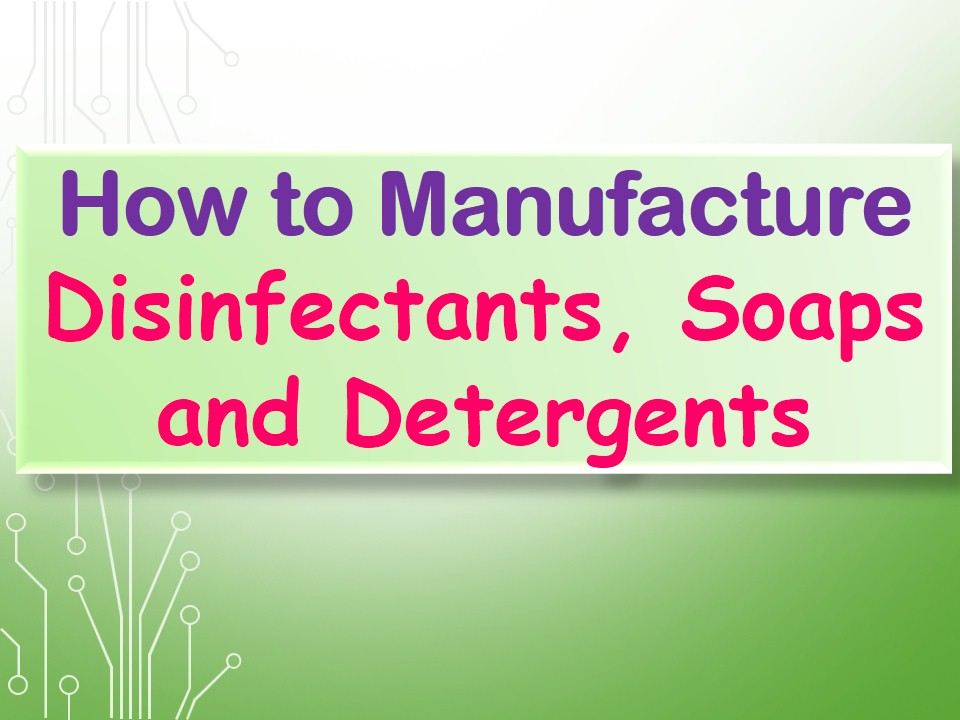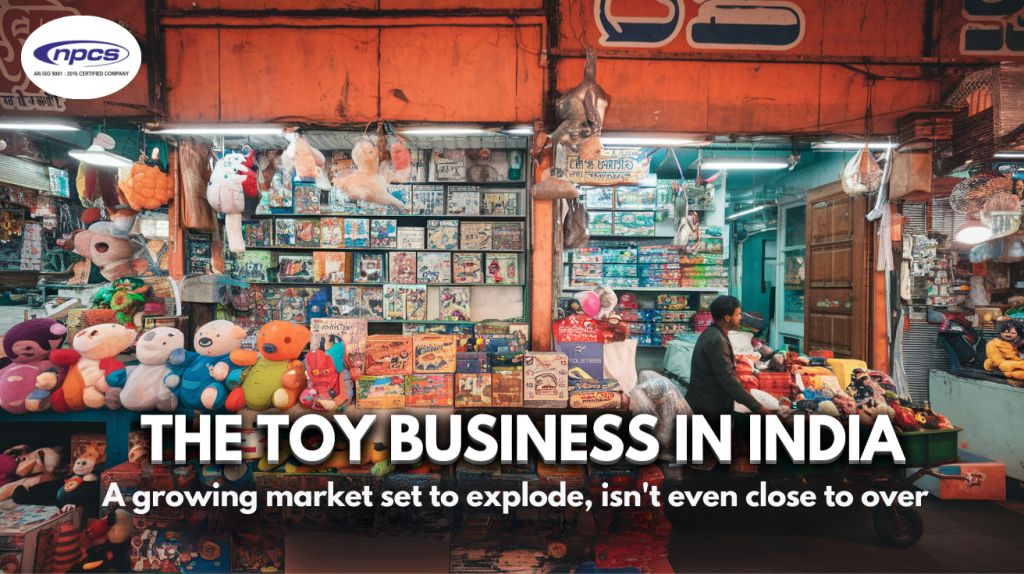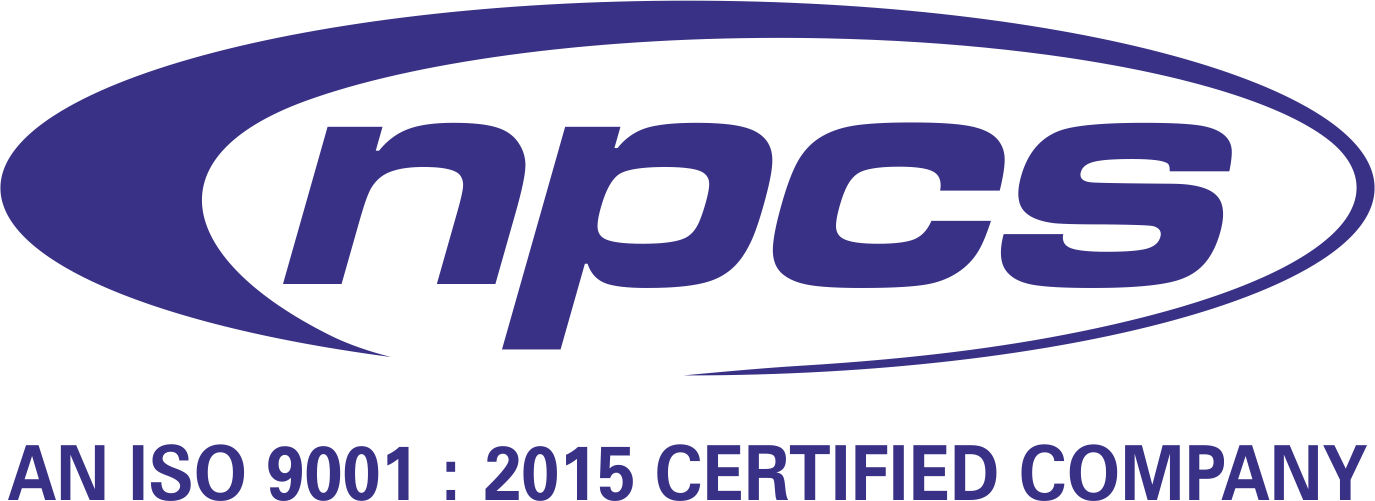
Soaps and detergents are used frequently in our daily life. We use them to wash our hands and clean our clothes without ever really paying attention to how they work. Beneath the plain white surface of a bar of soap lies an intriguing history and a powerful chemistry. It has been said that amount of soap and detergent consumed in a country is a reliable measure of its civilizations. There was a time when these products were luxury; now it is a necessity. A disinfectant or agent that frees from infection is ordinarily a chemical agent which kills disease germs or other harmful microorganisms and is applied to inanimate objects. The specific way in which a disinfectant agent is used is dependent on both the desired objective and the infectious agent present. The term detergent by itself refers specifically to laundry detergent or dish detergent, as opposed to hand soap or other types of cleaning agents. Detergents are commonly available as powders or concentrated solutions. Detergents work because they are amphiphilic partly hydrophilic (polar) and partly hydrophobic (non polar). Their dual nature facilitates the mixture of hydrophobic compounds (like oil and grease) with water. Because air is not hydrophillic, detergents are also foaming agents to varying degrees. Completely non polar solvents known as degreasers can also remove hydrophobic contaminants but may not dissolve in water because of a lack of polar elements. Soaps are mainly used as surfactants for washing, bathing, and cleaning, but they are also used in textile spinning and are important components of lubricants. Soap is a mixture of sodium salts of various naturally occurring fatty acids. Soaps and detergents are very similar in their chemical properties. However, there is a significant difference between them; soaps are produced from natural products, and detergents are synthetic, or manmade. The market is expected to grow at rates ranging from under 4% to around 4.5%. These are very modest rates considering that the lifestyles not only of urbanites, but even of well off rural folks are changing at a very high pace. The analysts are expecting the industry to continue to grow in both the industrialized as well as developing nations.
Soap is a product for many people and the lathering up can be a treasured part of a morning or nightly routine. Whether it might be scented or unscented, in bars, gels, and liquids, soap is a part of our daily lives. The market is growing at 7% a year. This means that the incremental demand generation is 5% over and above the population growth. With increasing awareness of hygienic standards, the market for the Soaps could grow at a rate higher than 8% annually. Interestingly, 60% of the market is now sourced from rural sector. This means that the variance between the two segments is not very large. Since upper-end market focus is the urban areas, margins come from the urban sector.
A detergent is a surfactant or a mixture of surfactants with “cleaning properties in dilute solutions. Detergents, as a constituent of the overall FMCG industry, accounts for a near 12% of the total demand for all FMCG products estimated at over Rs. 530 bn. Detergents, chemically known as alfa olefin sulphonates (AOS) are used as fabric brightening agent, anti-deposition agent, stain remover and as a bleacher. A major input for the production of detergents is a petrochemical, Linear Alkyl Benzene (LAB), while soaps rely more on an inorganic chemical, caustic soda, as a major input.
To cater to this increasing demand of quality washing powders most of the top detergent brands in India are continually introducing better packaged detergents that are offering a host of benefits in a single wash. In India HUL holds a 38 per cent market share in the washing powder segment clearly standing as the winner. The other important players in the detergent industry include Surf Excel, Nirma and Sunlight.
Disinfectants market has grown in value terms to an estimated Rs. 6 bn a year, if multi-purpose detergents are excluded. In volume terms, the market is of the order of around 9600 tpa of which more than 60% is represented by phenyls. The branded MNC-oriented market is placed at over Rs. 2750 mn and is growing at about 20%.
Growing healthcare expenditure will aid the growth of the surface disinfectants market. Healthcare expenditure constitutes a significant part of the development budget of all countries. It consists of spending by both public and private sources on medical goods and services. Rapid economic development across the globe is expected to improve access to quality healthcare. Increasing healthcare expenditure will lead to a rise in the demand for quality healthcare and will be an important growth driver for the surface disinfectants market.
Some of the fundamentals of the book are technology of soap making, washing of saponified soap, plant for total soap making operation, construction materials for soap making plants, earth bleaching of oils, chemical bleaching, fatty acids, manufacture of framed soaps, manufacture of chips and flakes, manufacture of milled bars, the mazzoni process, floating soap bars, mixing of soap, chemicals used in soaps & detergents, alkylolamides, alkylolamides in shampoo formulations, chemistry of the alkylolamides, mono alkylolamides, di alkylolamides, pure dialkylolamides, phosphoxylated alkylolamides, sulphated alkylolamides, disinfectants and antiseptics, dry cleaning agents, etc.
The present book contains formulae, processes of different types of soaps, detergents and disinfectants. These products have good demand in domestic as well as in International market. So there is a very good scope for new entrepreneurs to venture into this field.
This book is an invaluable resource for entrepreneurs, technocrats and for those who want to diversify in to this field.
See more
Contact us:
Niir Project Consultancy Services
106-E, Kamla Nagar, Near Spark Mall,
New Delhi-110007, India.
Email: npcs.ei@gmail.com , info@entrepreneurindia.co
Tel: +91-11-23843955, 23845654, 23845886, 8800733955
Mobile: +91-9811043595
Fax: +91-11-23841561
Website :
http://www.niir.org
http://www.entrepreneurindia.co
Tags
Active Ingredients for Detergents, Art of soap making, Best small and cottage scale industries, Chemicals Used In Soaps & Detergents, Cleaners, Complete Guide to Making Natural Soap, Components of detergents, Composition and Manufacturing of Detergent, Detergency process, Detergent Formulation Consulting In India, Detergent Powder Business, Disinfectant production process, Disinfectant products formulation and production process, Disinfectants and antiseptics manufacturing, Disinfectants Making Small Business Manufacturing, Great Opportunity for Startup, How to Make a Natural Disinfectant, How to Make Detergent Powder, How to make disinfectant?, How to Make Soap, How to Make Soap – Material, Manufacture, Making, Used, Processing, How to Make/Produce Antiseptic, How to Manufacture Detergent and Cleaning Products, How to manufacture disinfectants and antiseptics, How to manufacture soap, How to manufacture soaps Detergents and Disinfectants, How to produce insecticide and disinfectant in India– Business, How to Start a Soap Manufacturing industry, How to Start a Soap Production Business, How to Start a Soaps Detergents and Disinfectants business?, How to Start a Soaps Detergents and Disinfectants Production Business, How to start a successful Soap Manufacturing business, How to start a successful Soaps Detergents and Disinfectants industry, How to Start Soap Manufacturing Industry in India, How to Start Soaps Detergents and Disinfectants Industry in India, How to Start Your Own Soap Business, Liquid Detergents, Manufacturing Detergent Cakes, Manufacture of Disinfectants, Manufacture of Framed Soaps, Manufacture of Milled Bars, Manufacture of Synthetic Detergent Powder, modern small and cottage scale industries, Most Profitable Soap Manufacturing Business Ideas, Most Profitable Soaps Detergents and Disinfectants Business Ideas, Powder Detergent Manufacturing Process, Process technology books, Production of Detergent Powder by Dry Mixing, Production of soap, Profile on the Production of Disinfectant, profitable small and cottage scale industries, Profitable Small Scale Manufacture of Soaps & Detergents, Profitable Small Scale Soaps Detergents and Disinfectants Manufacturing, Setting up and opening your Soaps Detergents and Disinfectants Business, Setup a detergent industry, Small scale Commercial soap making, Small scale Soap production line, Small Scale Soaps Detergents and Disinfectants manufacturing plant, small scale Soaps Detergents and Disinfectants production line, soap and detergent chemistry, Soap Based Small Scale Industries Projects, Soap from Fatty Acids, Soap Making Books, Soap making Business, Soap Making with Fatty Acids, Soap Manufacturing Industry in India, Soap manufacturing process, Soap manufacturing technology book, Soaps and Detergent Book, Soaps Detergents and Disinfectants Based Small Scale Industries, Soaps Detergents and Disinfectants Business, Soaps Detergents and Disinfectants Industry in India, Soaps Detergents and Disinfectants making machine factory, Soaps Detergents and Disinfectants Technology Handbook, Start Up India, Stand up India, Starting a Soaps Detergents and Disinfectants Business, Start-up Business Plan for Soaps Detergents and Disinfectants, Technology Book on detergent, Technology Book on soap, Technology of soap making, The Product Formulation and Procedure of detergent, Washing Powder Manufacturing Plant, What is detergency?, What Is the Production Process for Powder Detergent?
Contact Form
[contact-form][contact-field label=’Name’ type=’name’ required=’1’/][contact-field label=’Email’ type=’email’ required=’1’/][contact-field label=’Country’ type=’text’ required=’1’/][contact-field label=’Mobile’ type=’text’/][contact-field label=’Website’ type=’url’/][contact-field label=’Comment’ type=’textarea’ required=’1’/][/contact-form]





